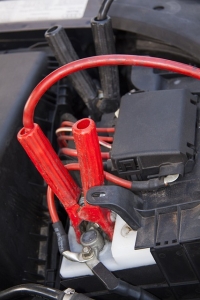How to Use Jumper Cables to Power Up a Dead Battery
 Encountering a flat tire, a dead battery, or purchasing a used car without a vehicle history reportare common concerns for many drivers in Canada. Whether it’s your vehicle or a friend’s, knowing how to safely jump-start a car can be a valuable skill. In this guide, we’ll walk you through the steps to boost a car using jumper cables, ensuring a smooth and safe process from start to finish. Additionally, we’ll provide essential safety tips to keep in mind throughout the procedure, ensuring both your safety and the well-being of your vehicle’s battery.
Encountering a flat tire, a dead battery, or purchasing a used car without a vehicle history reportare common concerns for many drivers in Canada. Whether it’s your vehicle or a friend’s, knowing how to safely jump-start a car can be a valuable skill. In this guide, we’ll walk you through the steps to boost a car using jumper cables, ensuring a smooth and safe process from start to finish. Additionally, we’ll provide essential safety tips to keep in mind throughout the procedure, ensuring both your safety and the well-being of your vehicle’s battery.
Jump Starting a Car: A Step-by-Step Guide
When faced with a dead battery, knowing how to use jumper cables can be a lifesaver. Here’s a step-by-step guide to safely boosting a car using jumper cables:- Position Vehicles: Pull the booster vehicle close to the vehicle with the dead battery, ensuring the jumper cables can reach but are not touching.
- Prepare Both Cars: Turn off the ignition of both cars and ensure they are in park (or neutral for manual transmissions). Engage the parking brakes and switch off all accessories. Remove any devices plugged into the cigarette lighter.
- Inspect Jumper Cables: Check that your jumper cables are clean and well insulated. Consider wearing protective eyewear and gloves before handling.
- Connect Positive Ends: Attach the positive (typically red) end of one jumper cable to the positive terminal of the dead battery, marked with a “+” sign. Connect the other red jumper to the positive terminal of the working battery or booster car’s battery.
- Attach Negative Ends: Connect the negative (usually black) end of the cable to the negative battery terminal (marked with a “-” sign) on the booster car. Then, attach the other black clip to an unpainted metal surface on the engine of the dead car, away from the battery.
- Start the Booster Car: Start the engine of the booster car and let it idle for several minutes, allowing the dead battery to charge.
- Start the Dead Car: Attempt to start the dead vehicle. If it doesn’t start, do not persist to avoid damaging the starter. Assess other potential issues preventing the vehicle from starting.
- Remove Jumper Cables: Once the dead car has been boosted, remove the cables in reverse order, ensuring they do not touch each other or any moving engine parts.
- Disconnect the Jumper Cables: Remove the negative cable from the engine block of the jump-started car, followed by the booster car’s negative cable. Then, disconnect the positive cable from the booster car’s battery, followed by the formerly dead battery.
- Drive to Safety: Drive the jump-started car to a safe location before turning off the engine. Depending on the battery’s condition, it may require another boost, so keep this in mind when shutting off the engine.
Safety Tips for Jump-Starting a Dead Battery
Check Battery Condition: Avoid jump-starting a car with a cracked or leaking battery to prevent potential explosions. Replace the battery if necessary. Clean corroded terminals before jump-starting.Use Quality Cables: Invest in high-quality jumper cables with well-insulated clamps and at least 8-gauge wire for reliability.
Prevent Cable Contact: Keep jumper cables from touching each other during the process to avoid damaging the car’s computer and charging system.
Handle Batteries Carefully: Car batteries can produce explosive gases, so handle them with caution. Wear protective gear, avoid smoking near the battery, and ensure secure connections.
Seek Professional Help: If unsure about jump-starting procedures, contact a professional service like CAA for assistance. Safety should always come first when dealing with car batteries.
In conclusion, jump-starting a dead battery is a handy skill for any driver. However, it’s essential to figure out what caused the battery failure. When buying a used car, checking for any past battery or electrical issues can help you make a more informed decision.

